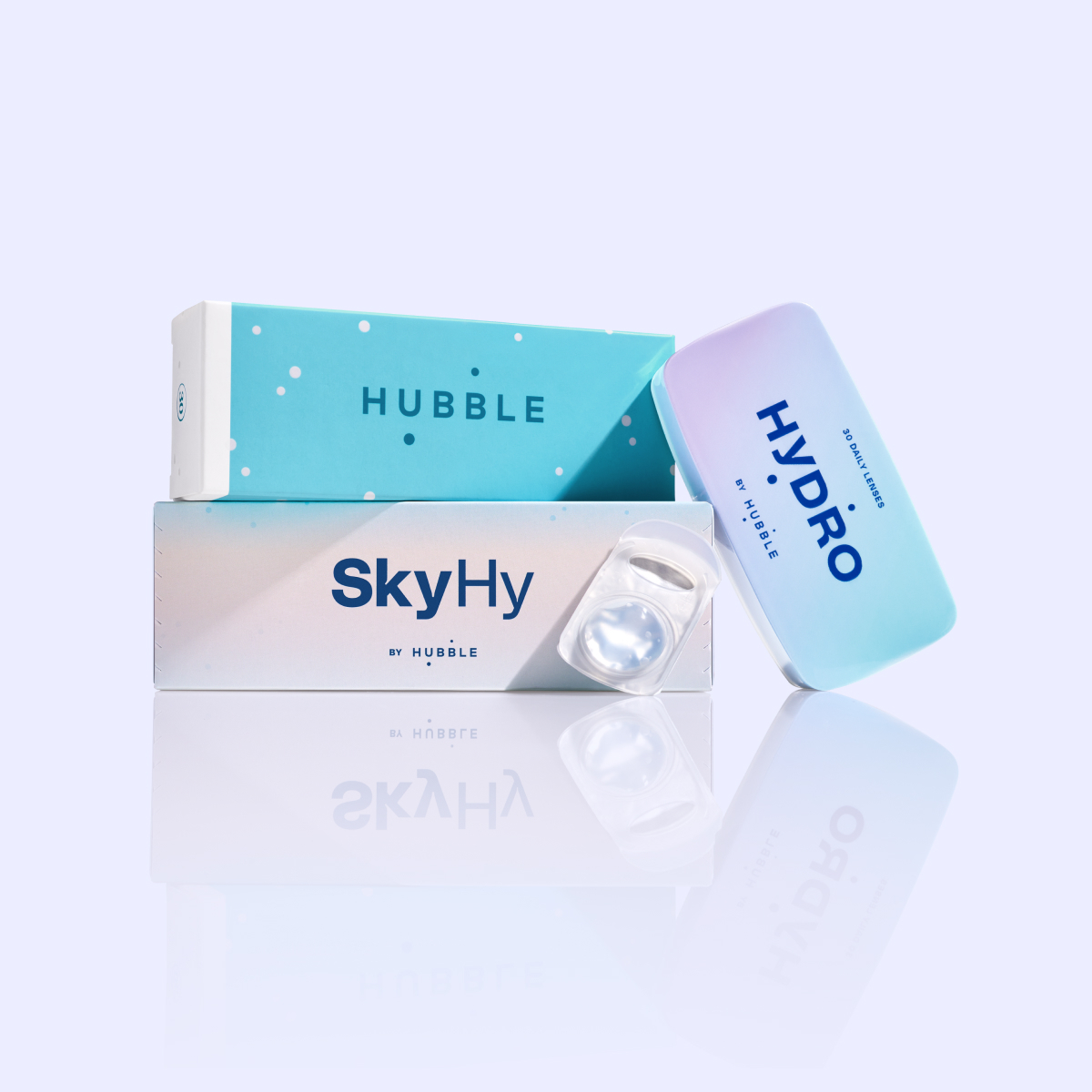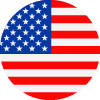How to Read Your Contact Lens Prescription
If you've worn glasses and have decided to try contact lenses interchangeably or full-time, you're most likely aware that you can't use your glasses prescription to obtain contact lenses.
You may be left with a few questions considering that both modes of eyewear are theoretically correcting the same vision problem(s).
But, there's a perfectly simple explanation for why you need a contact lens-specific prescription to get contacts.
Below, we'll break down the prescriptions for different types of contact lenses, what they mean for your eyes, and how to understand your vision correction needs.
What is a Contact Lens Prescription, and Why Do You Need It?
First, let's dive into a vision prescription and how it works.
Eyewear prescriptions are written down by eye health professionals based on what your eye exam reveals about your vision and eyes.
So, what exactly differentiates glasses prescriptions from contact lens prescriptions?
Glasses sit roughly 12 mm from your eyes, so a PD (pupillary distance) measurement is needed. Pupillary distance is the measurement from one pupil to the other. Without this number, your glasses wouldn't be centered accurately over your line of vision. However, PD is not needed for contact lenses because contact lenses sit directly on the eyes.
But, unlike a glasses prescription, a contact lens prescription includes measurements about the size of the lenses, which in some cases may be based on your eye shape.
Other information that may be a part of your contact lens prescription is how often you should replace, remove, and discard your lenses. This can vary greatly depending on the type of contact lenses you wear.
For instance, all of Hubble's contact lenses including Classic by Hubble, SkyHy by Hubble, and Hydro by Hubble are prescribed for daily use, and as a result, you should remove and discard your lenses at the end of each day and insert a fresh pair the next time you wear contacts. . Other types of lenses are reusable and can be re-worn for weeks at a time. (Just make sure to follow the cleaning and storage instructions in between uses!)

This information may seem like common sense, but oftentimes it's hard to know exactly how long you can safely wear your lenses and how often to insert a fresh pair.
This is vital to your eye health and vision because overusing or re-wearing lenses that should have been disposed of may cause eye irritation and even infections.
Proteins, calcium, and lipids build up under contact lenses. Although these are naturally produced and secreted via our tears when build-up occurs on the lenses, the eyes are kept from functioning as they should, and eye health concerns may arise.
Another important bit of contact lens prescription info is that your eyes may differ in the necessary vision correction.
For example, one eye may require a single vision correction near, intermediate, or far, whereas the other eye may need a toric (astigmatism) or bifocal prescription. Although this isn't typical, it may be something you encounter on your prescription and could help you understand what lenses are right for you.
If this is the case for your vision, you may find that your doctor prescribed separate parameters for each eye and may have also prescribed a different brand or type of lens per eye.
Long story short, your prescription tells the story of your eyes and vision to your lens provider so that they may provide you with accurate and effective vision correction. But, lens providers shouldn't be the only ones who can decode your prescription; you have the right to understand it and what it means for your eye health.
As with any medical device or prescription, the most powerful thing you can do for your health and well-being is to understand your diagnosis and what is needed to provide you with the best health care possible.
After all, it's your eyes; only you can decide what's best for them with your doctor's guidance.

What Do All the Acronyms and Measurements on Your Contact Lens Prescription Mean?
Hubble's here to demystify your contact lens prescription, so you never have to wonder what it all means again.
- OD: Oculus Dexter, the Latin term for the right eye.
- OS: Oculus Sinister, the Latin term for the left eye.
- BC: is the Base Curve (usually a number between 8 and 10 and can differ depending on the brand of your lenses, just like clothing, the size changes depending on the manufacturer.) The base curve describes the curvature of the lens, which affects how the lens sits on your eye. This measurement is usually written in millimeters or flat, median, or steep.
- PWR: is the Power and is also referred to as SPH or Sphere. Power and Sphere let your lens provider know whether you're farsighted or nearsighted and how much vision correction is needed. If you're farsighted, you'll see a plus sign next to the number; if you're nearsighted, you guessed it, you'll see a minus sign. Power is measured in increments of 0.25 diopters.
Side Note: A Diopter is a unit of measurement of the refractive power of lenses equal to the reciprocal of the focal length in meters. Simply put, diopter strength refers to the optical power of a lens. The higher the number/value, the stronger the prescription. For example, "-5.00" written under “Sphere” means that you are very nearsighted and need a five-diopter correction. You may also see diopters expressed in decimals, such as 1.25 or 4.75.
- DIA: is the Diameter of the lens (usually a number ranging between 13 and 15). Diameter is also written in millimeters and lets you know the width that is suitable for your eyes.
- CYL: is the Cylinder (usually a number ranging between -2.25 and -0.75). The Cylinder signifies the degree of astigmatism that requires correction.
- AX: is the Axis (usually a number ranging between 0 and 180 degrees). The Axis shows the angle of correction you require.
Side Note: Astigmatism means you have an imperfection in the curvature of your eye's cornea or lens, making your vision blurry at all distances. Cylinder and Axis values are written by your prescriber to help you identify contact lenses that will help correct your astigmatism.
- ADD: is Addition and is written if you have presbyopia and need multifocal lenses. This is seen with a high, medium, or low indication and with the following abbreviations, "Add Power" or "Extra Strength."
Side Note: Presbyopia is the gradual loss of your eye's ability to focus on nearby objects. This condition usually becomes noticeable in your early to mid-40s and worsens until age 65. The most common symptoms of presbyopia are eyestrain or headaches after reading or doing close-up work.
- D: means Dominant (usually defining which eye is the dominant eye) Dominant is used if you wear multifocal or bifocal lenses. Your lens correction requires that your dominant and nondominant eye be established. Your dominant eye, usually seen written as "D," prioritizes distance, whereas your nondominant eye, seen written as "N," prioritizes near vision.
- Brand/Manufacturer: Refers to the specific brand/manufacturer of contact lens that your doctor has prescribed, either by your request or because the doctor has identified a specific lens for you to wear, depending on your vision correction needs.
We're one step closer to deciphering your contact lens prescription.
How to Accurately Read and Understand Your Prescription
You now know all the acronyms and numbers written on your prescription, but just how do you put them all together to accurately read your prescription like a pro?
Don't fret! Hubble's not done breaking down your prescription just yet.
Let's start with some sample prescriptions and explain what each means for your vision.
How to Read Single Vision Contact Lens Prescription:

Your single vision prescription will be broken down by eye with "OD," right eye, and "OS," left eye. You'll see Power, Base Curve, Diameter, and Brand written.
This prescription details a nearsighted vision correction needed as the numbers written under Power have a minus sign before them. If the numbers written under Power had a plus sign, you'd know that means you need farsighted vision correction.
The Base Curve indicates the exact fit required for the lens to meet the curve of your eye. The Diameter seen here shows the width of your eyes to aid in adequately fitting your lenses. The Brand is specified here as Hubble, tailoring your prescription to that specific brand of lenses. This is necessary because, as previously mentioned, each brand may have a different fit, like clothing stores.
How to Read a Toric Contact Lens Prescription to Correct Astigmatism:

Prescriptions to correct Astigmatism and provide Toric Lenses contain Cylinder and Axis along with Power/Sphere, Base Curve, and Diameter.
Side Note: Toric Lens is a lens with different optical power and focal length in two orientations perpendicular to each other. One of the lens surfaces is shaped like a "cap" from a torus, and the other is usually spherical. Such a lens behaves like a combination of a spherical lens and a cylindrical lens.
How to Read a Multifocal/Progressive Contact Lens Prescription to Correct Presbyopia:

Multifocal/Progressive lenses are designed with a gradual transition between a prescription for close reading on one end and a prescription for normal distance viewing on the other. These contact lenses can accommodate multiple different prescriptions in a single lens so that you can focus clearly on objects at a wide range of distances.
Lenses to treat Presbyopia, the gradual inability to focus on nearby objects, contain an indication of High, Medium, or Low written under ADD, or Addition, also known as "Add Strength" or "Extra Power." This prescription will also include Power, Base Curve, Diameter, and Brand.
Why Choose Hubble Contact Lenses?
Now that you've thoroughly learned how to read your prescription confidently, why not get to know Hubble's lenses to decide if they’re the right fit for you!
Hubble's FDA-approved daily disposable lenses were created to provide affordable all-day comfort, crystal clear vision, and a safer alternative to reusable lenses.
The Hubble story started with our Classic by Hubble Lenses. Made from FDA-approved methafilcon A hydrogel material— and offering UV protection, a thin edge, and 55% water content, our original lenses are always just $1 for your first order.
Hydro by Hubble Contacts are the naturally hydrating solution for dry eyes, with 57% water content and ultra-thin edges to reduce eyelid friction. Plus, get them delivered right to your door in the world's slimmest contact lens packaging.
Finally, SkyHy by Hubble Contacts are breathable and comfortable from the moment you put them on to when you’re ready to take them off. These silicone hydrogel lenses are designed to allow oxygen to easily transfer through the lens to keep your eyes feeling fresh the whole day long.
All of Hubble’s contact lens products ship directly to you on a recurring basis. Easily modify or update your monthly or weekly contact subscription in Hubble's customer portal instantly at any time.
Hubble lenses offer vision correction for single-vision prescriptions only at this time. However, if you require Toric or Multifocal/Progressive lenses Hubble's sister site, ContactsCart, offers the very best lenses at unbelievably low prices.
You can get started with Hubble today with any of our first-order starter offers get on your way to seeing clearly without breaking the bank.
Now you'll never have a bewildered look on your face again while looking at your prescription, and you'll have the power to make the best choices for your vision needs.
How to Read a Contact Lens Prescription FAQs
Do Contact Lens Require a Prescription?
Yes, all orders from Hubble Contacts require a valid prescription. The prescription must include the date of prescription expiration, the prescriber’s name; and, for the lenses themselves, the power, base curve, manufacturer, diameter, and material.
How Do I Get a Contact Prescription?
To obtain a contact lens prescription, it's necessary to see an optometrist or ophthalmologist for a comprehensive eye examination. The eye specialist will evaluate your vision and eye health, and based on your needs, they'll provide a prescription tailored for contact lenses. Remember, an accurate and up-to-date prescription ensures comfortable and clear vision with your contacts.
What do OD and OS mean on my contact lens prescription?
On your contact lens prescription, OD stands for "Oculus Dexter," referring to your right eye, while OS represents "Oculus Sinister," indicating your left eye. These Latin terms help opticians and lens manufacturers determine the correct specifications for each of your eyes, ensuring optimal fit and vision.
What does BC mean on my contact lens prescription?
BC on your contact lens prescription refers to "Base Curve." It denotes the curvature measurement of the lens. A good fit between the BC of your lens and the curvature of your eye is vital for comfort and clear vision. Depending on your eye's shape, your optometrist will prescribe a specific BC for optimal fit.
What does PWR mean on my contact lens prescription?
PWR on your contact lens prescription stands for "Power." It indicates the strength of correction required to correct your vision, whether you're nearsighted (negative values) or farsighted (positive values). Your eye specialist determines this measurement during your eye exam.
Are Glasses and Contact Prescriptions the Same?
No, glasses and contact lens prescriptions aren't the same. While both contain information about your vision correction needs, contact lens prescriptions include additional measurements, such as base curve and diameter, crucial for a proper lens fit. Always ensure you're using the right prescription for the type of eyewear you're purchasing.
What if My Contact Prescription Is Expired or my prescription changes?
If your contact lens prescription is expired or has changed, you’ll need to visit your eye specialist for a new prescription. If you’re ordering with Hubble and your prescription changes (or even if you entered it incorrectly), feel free to reach out to us. We’ll also connect with your eye care provider to see if we can continue your subscription.
Remember to update your prescription before we send out your next order! Once your package is shipped, you'll need to pay for a replacement box if you later find out you need a new prescription. Regular eye exams ensure that your contact lenses offer the best fit and vision correction.
Do I Have to Order the Brand On My Contact Prescription?
Your eye doctor will recommend a specific brand based on the fit, material, and your personal needs. While you can discuss alternative brands, it's crucial to consult with your optometrist before making changes. Different brands may have variations in fit and material, which can affect comfort and vision clarity.


